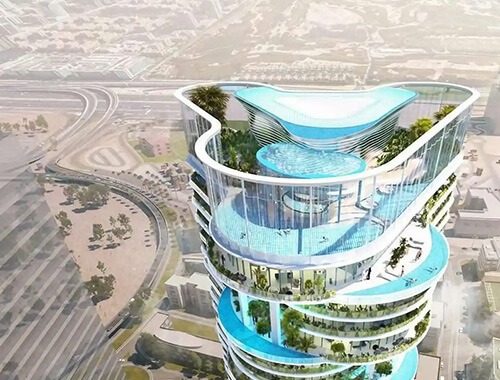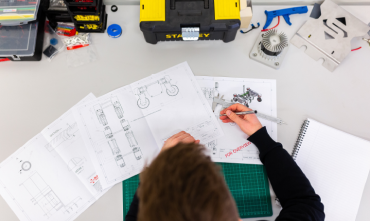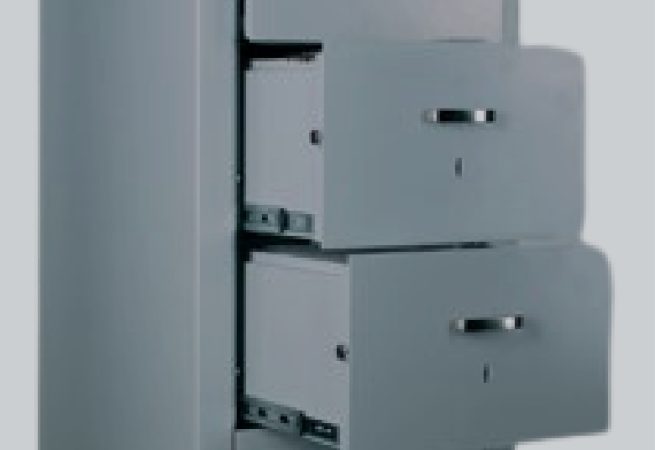

Custom Vs. Stock Cabinets: What’s Best For Your Kitchen?
Choosing the right kitchen cabinets is a significant decision when planning a kitchen renovation or a new build. Two primary options to consider are custom and stock cabinets. Each has its advantages and disadvantages, and the choice depends on your budget, preferences, and specific needs. Here, we’ll examine the differences between custom and stock kitchen cabinets in Dubai to help you decide what’s best for your kitchen.
Custom cabinets: Tailored to perfection:
Custom cabinets are precisely what their name suggests – tailor-made to your exact specifications. They offer a range of benefits:
1. Design flexibility: With custom cabinets, you have complete control over the design, materials, and finishes. You can choose unique styles, sizes, and configurations to suit your kitchen’s layout and your personal taste.
2. Quality and craftsmanship: Custom cabinets are typically crafted by skilled artisans who pay meticulous attention to detail. The materials used are often of the highest quality, resulting in durable and long-lasting cabinets.
3. Personalization: You can personalize your custom cabinets with unique features, such as pull-out spice racks, specialized storage solutions, or even intricate carvings. These cabinets are tailored to your lifestyle and preferences.
4. Perfect fit: Custom cabinets are designed to fit your kitchen space precisely, eliminating the need for filler pieces or adjustments. This ensures a seamless, polished look.
5. High resale value: The quality and uniqueness of custom cabinets can significantly enhance your home’s resale value.
Stock cabinets: Affordable and accessible:
Stock cabinets are pre-made and readily available in standard sizes and designs. They offer their own set of advantages:
1. Cost-effective: Stock cabinets are typically more budget-friendly than custom options. They are a great choice for those looking to save on their kitchen renovation.
2. Quick delivery: Stock cabinets are mass-produced and readily available, which means you can have them delivered faster than custom cabinets.
3. Variety: Stock cabinets come in various styles, finishes, and materials, providing a wide range of options to choose from.
4. Easy replacement: If a stock cabinet gets damaged, it’s easier to find a replacement since they are widely produced.
The choice between custom and stock cabinets depends on your budget, the level of customization you desire, and your specific kitchen needs. Custom cabinets offer the ultimate in personalization and quality, while stock cabinets provide affordability and accessibility.
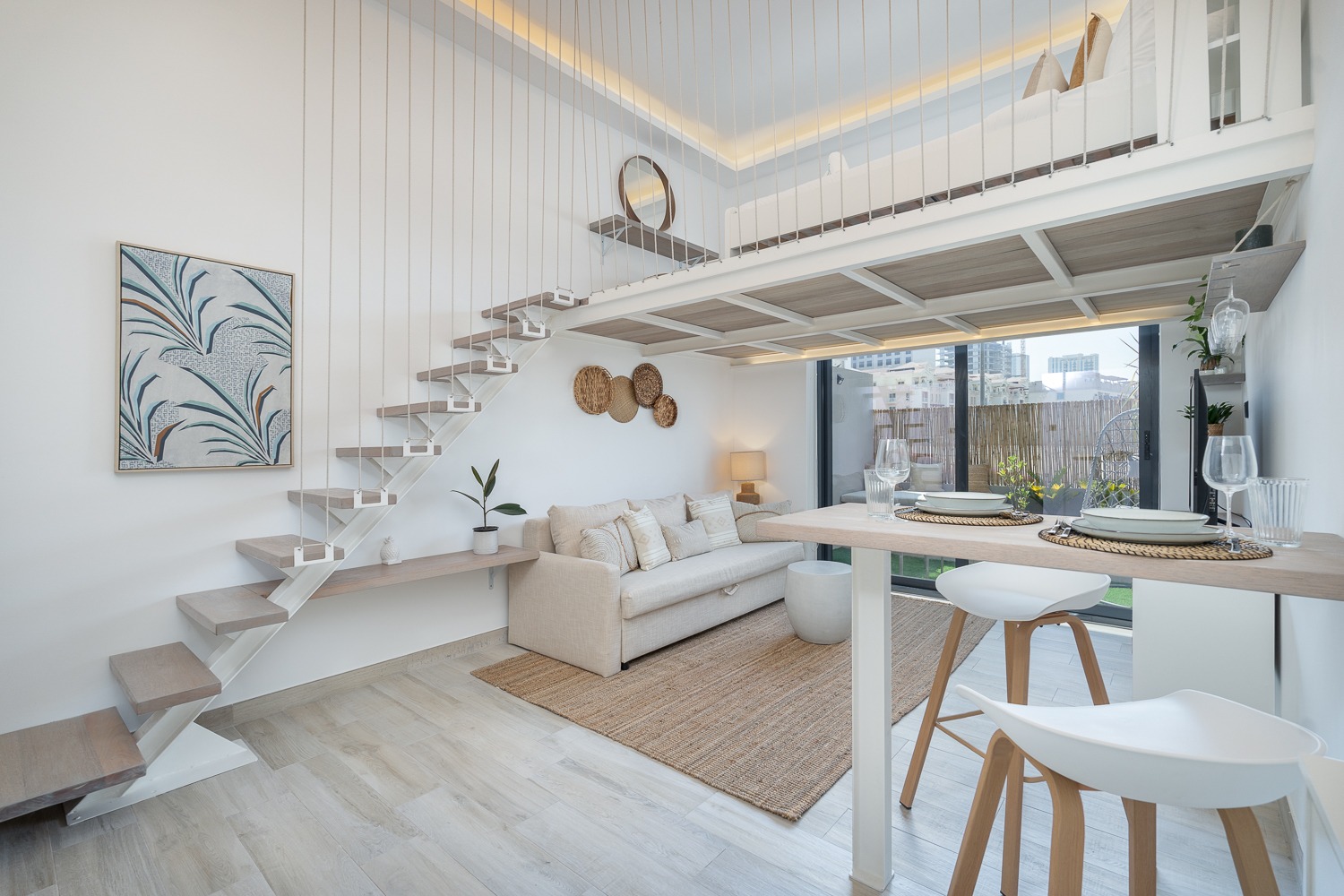
What Is Included In Short-Term Rental Property Management
Short-term rental properties, such as vacation homes or furnished apartments, require efficient and effective management to ensure a smooth and profitable operation. Short term rental property management encompasses a range of services designed to handle the day-to-day operations, guest interactions, and overall maintenance of the property. In this article, we will explore the key components included in short-term rental property management.
Property listing and marketing:
One of the primary tasks of short-term rental property management is creating an appealing listing and marketing the property to potential guests. Property managers work on optimizing the property’s online listing, ensuring that it has attractive descriptions, high-quality photographs, and competitive pricing. They also promote the property across various booking platforms, social media channels, and other marketing channels to increase its visibility and reach a wider audience.
Guest communication and bookings:
Short-term rental property managers handle guest inquiries, communication, and bookings from start to finish. They promptly respond to guest inquiries, provide detailed information about the property, and assist in the booking process. Property managers also manage the reservation system, ensuring that bookings are properly recorded, deposits are collected, and payment transactions are handled securely and efficiently.
Property cleaning and maintenance:
Maintaining a clean and well-maintained property is crucial for guest satisfaction. Short-term rental property management includes coordinating regular cleaning services to ensure that the property is spotless before each guest’s arrival and after their departure. Property managers also oversee routine maintenance tasks, such as checking for repairs, inspecting appliances, and ensuring that the property meets all safety standards.
Check-in and check-out procedures:
Smooth and efficient check-in and check-out processes are essential for a positive guest experience. Property managers handle the logistics of guest arrivals and departures, including key exchanges or providing access codes. They ensure that guests receive all the necessary information about the property, including house rules, parking instructions, and any other relevant details to facilitate a seamless transition into and out of the property.
Guest services and support:
Short-term rental property managers serve as a point of contact for guests throughout their stay. They provide support and assistance, addressing any issues or concerns that may arise. Property managers are available to handle guest inquiries, provide recommendations for local attractions and services, and offer assistance in case of emergencies. This level of personalized service helps to enhance the guest experience and fosters positive reviews and guest satisfaction.
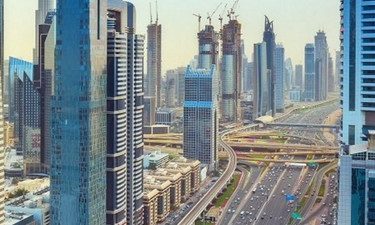
The Ins And Outs Of Construction Contracts
Construction contracts are an essential component of any construction project. They outline the legal obligations and responsibilities of all parties involved in the project, including the owner, contractor, and subcontractors. This article will explore the ins and outs of contracts with construction companies in Riyadh.
Types of construction contracts
There are several types of construction contracts, each with its advantages and disadvantages. Some of the most common types of construction contracts include:
Lump sum contracts
A fixed price is agreed upon before the project starts, and the contractor is responsible for completing the project within that budget.
Cost plus contracts
The owner agrees to pay the contractor for the actual cost of the project plus a fee for the contractor’s services.
Time and materials contracts
The owner agrees to pay the contractor for the actual cost of labor and materials, plus a fee for the contractor’s services.
Design-build contracts
The owner contracts with a single entity to provide design and construction services.
Key components of construction contracts
Construction contracts typically include several key components, including:
- Scope of Work – a detailed work description, including drawings and specifications.
- Payment Terms – the payment amount and timing, including retainage and change order procedures.
- Schedule – the expected timeline for completion of the project.
- Warranty – the contractor’s warranty for the work performed.
- Indemnification – the allocation of responsibility for damages or losses incurred during the project.
- Dispute Resolution – the process for resolving disputes between the parties.
- Termination – the circumstances under which the contract can be terminated.
Contract administration
Proper contract administration is essential for a successful construction project. This involves monitoring the project’s progress, ensuring that the contract performs the work, and addressing any issues that arise. The contract administrator is typically the owner’s representative and manages the contract.
Construction contracts are a critical component of any construction project. They outline the legal obligations and responsibilities of all parties involved in the project and provide a framework for the successful completion of the project. By understanding the different types of contracts, key components, and proper contract administration, you can confidently approach your next construction project and achieve your goals.

Tips For A Smooth Transition From Home To Nursery School
Starting nursery school can be an exciting time for young children, but it can also be a big change from the comfort and familiarity of home. As parents, there are many things we can do to help ease the transition and make the experience a positive one for our children. Here are some tips for a smooth transition from home to the best nursery in Jumeirah.
Start a routine
Starting a routine at home can help prepare children for the nursery school structure. Establish consistent times for meals, nap time, and bedtime. This will help children feel more secure and comfortable with a predictable schedule.
Visit the nursery school
Take your child to visit the nursery school before the first day. This can help familiarize them with the new environment and ease their anxiety. Show them where they will spend their time and introduce them to the teachers and other children.
Talk about it
Talk to your child about nursery school positively. Let them know what to expect and answer any questions they may have. It’s important to validate any concerns or fears and reassure them that nursery school is a safe and fun place to be.
Practice separation
Practice separating from your child for short periods. This can help them develop the confidence and coping skills needed to handle separation in nursery school. Start with short periods, like a trip to the grocery store or a visit to a friend’s house.
Build connections
Make connections with other parents and children who will be attending the same nursery school. This can help children feel more comfortable and familiar with their new environment. Organize playdates or attend school events together.
Label everything
Label your child’s belongings, including backpacks, clothes, and lunch boxes. This will help them feel more ownership over their belongings and make it easier for teachers and caregivers to identify their things.
Pack a comfort item
Consider packing a comfort item for your child, like a favorite stuffed animal or blanket. This can give them a sense of security and familiarity in a new environment.
Be prepared:
Make sure you have everything your child will need for nursery school, like extra clothes, snacks, and any necessary paperwork. Being prepared can help reduce stress and anxiety for you and your child.

Factors That Affect Wedding Dress Cost
Designing a wedding dress can be a dream come true for many brides. However, it’s important to understand that the cost of designing a wedding dress can vary greatly depending on several factors. Find here the best Dubai wedding dress designers.
Designer or seamstress you choose
The first factor that can affect the cost of designing a wedding dress is the designer or seamstress you choose. High-end designers may charge thousands of dollars for a custom wedding dress, while a local sewist may charge significantly less. It’s important to research and find a designer or seamstress that fits your budget.
Type of fabric that you choose
The second factor that can affect the cost of designing a wedding dress is the type of fabric that you choose. Luxury fabrics like silk or lace can be more expensive than other materials like polyester. The amount of fabric needed for the dress can also impact the cost.
Level of customization
The third factor that can affect the cost of designing a wedding dress is your desired customization level. If you want a unique and personalized dress, it may require more time and labor from the designer, which can increase the cost. Additionally, if you want intricate beading, embroidery, or other embellishments, it can impact the final cost.
So, how much does designing a wedding dress cost? A custom wedding dress can cost anywhere from $1,500 to $10,000. However, the final cost will depend on the factors mentioned above and other factors like the location and the overall complexity of the design.
It’s important to remember that the cost of designing a wedding dress is a significant investment. However, it’s also an opportunity to create a one-of-a-kind dress that perfectly reflects your style and vision for your wedding day.
If you’re on a tight budget but still want a custom wedding dress, consider working with a local sewist or designer who can work within your budget. Additionally, consider opting for more affordable fabrics or simpler designs that allow you to express your style.
The cost of designing a wedding dress can vary greatly depending on several factors, including the designer, fabric, and level of customization. However, with careful research and planning, it’s possible to create a custom wedding dress that fits your budget and perfectly reflects your style.
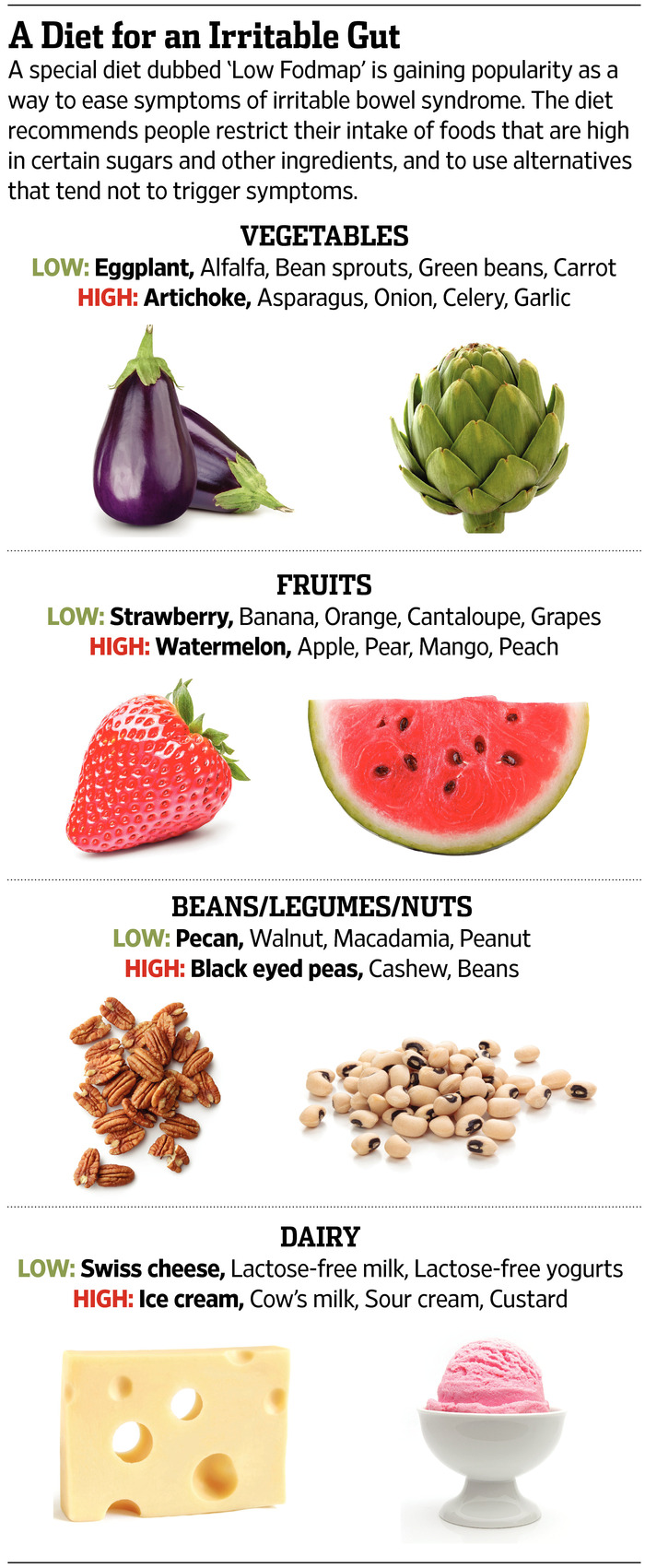
Managing Irritable Bowel Syndrome With A Low-FODMAP Diet
Irritable bowel syndrome (IBS) is a common gastrointestinal disorder that affects up to 20% of the world’s population. Symptoms of IBS Dubai include abdominal pain, bloating, diarrhea, and constipation. While the cause of IBS is not fully understood, research has shown that a low-FODMAP diet can help manage symptoms for many people.
What is a low-FODMAP diet?
FODMAPs are fermentable carbohydrates in many foods, including fruits, vegetables, grains, and dairy products. For some people with IBS, consuming high-FODMAP foods can exacerbate symptoms. A low-FODMAP diet involves restricting the intake of these fermentable carbohydrates to reduce symptoms of IBS.
The low-FODMAP diet involves several stages, including elimination, reintroduction, and maintenance phases. During the elimination phase, high-FODMAP foods are eliminated for 2-6 weeks. This phase is designed to identify trigger foods that may be exacerbating symptoms. During the reintroduction phase, individual FODMAPs are gradually reintroduced to the diet to identify which foods are well-tolerated and which should be avoided. Finally, during the maintenance phase, a long-term, personalized low-FODMAP diet is developed based on the individual’s trigger foods and tolerances.
Benefits of a low-FODMAP diet for IBS:
Studies have shown that a low-FODMAP diet can effectively manage IBS symptoms for many people. Research suggests that up to 75% of people with IBS experience reduced symptoms following a low-FODMAP diet.
In addition to symptom relief, a low-FODMAP diet may provide other benefits for individuals with IBS. These include improved quality of life, reduced anxiety and depression, and improved gut microbiome diversity.
Foods to avoid on a low-FODMAP diet:
During the elimination phase of the low-FODMAP diet, it is important to avoid high-FODMAP foods that may exacerbate symptoms of IBS. Some foods to avoid include:
• Fruits such as apples, pears, and mangoes
• Vegetables such as onions, garlic, and asparagus
• Dairy products such as milk, ice cream, and soft cheese
• Grains such as wheat, rye, and barley
• Legumes such as beans, lentils, and chickpeas
Irritable bowel syndrome can be a debilitating condition that significantly impacts the quality of life. While there is no cure for IBS, a low-FODMAP diet can effectively manage symptoms. By following the guidelines of the low-FODMAP diet, individuals with IBS can identify trigger foods and develop a personalized, long-term eating plan that promotes symptom relief and overall well-being.

Hair Care 101: Tips For Keeping Your Locks Healthy And Shiny
We all want healthy, shiny hair, but sometimes it takes work. There are countless products and techniques, and it can take time to know where to start. This article will cover some essential hair care tips from a famous barber JLT to keep your locks healthy and shiny.
Choose the right shampoo and conditioner:
The first step in hair care is choosing the right shampoo and conditioner for your hair type. Opt for a clarifying shampoo to remove excess oil if you have oily hair. If your hair is dry or damaged, look for a moisturizing shampoo and conditioner to help repair and nourish your strands. Choosing products free of sulfates and parabens is also essential, which can strip the hair of its natural oils and lead to damage.
Protect your hair from heat:
Heat styling tools like curling irons and flat irons can do a number on your hair, causing it to become dry and brittle. To minimize damage, use a heat protectant spray before using hot tools. It’s also a good idea to limit heat styling as much as possible, opting for air-drying or natural styles whenever possible.
Trim your hair regularly:
Regular trims are crucial for healthy hair, as they help prevent split ends and breakage. Aim to get a trim every 6-8 weeks to keep your hair in good condition. If you’re trying to grow your hair, don’t skip trims altogether – ask your stylist for a light dusting to remove split ends.
Avoid tight hairstyles:
Tight hairstyles like braids and ponytails can be damaging to the hair, as they put tension on the strands and can lead to breakage. Avoid tight hairstyles as much as possible, opting for looser styles instead. If you must wear a tight hairstyle, use a soft hair tie and avoid pulling too tightly.
Eat a healthy diet:
What you eat can also have an impact on your hair health. Eating a diet rich in protein, healthy fats, and vitamins and minerals can help nourish your hair from the inside out. Some foods particularly good for hair health include salmon, avocados, nuts, and leafy greens.
Incorporate hair masks into your routine:
Hair masks are a great way to give your hair an extra boost of hydration and nourishment. You can make your hair mask at home using ingredients like avocado, coconut oil, honey, or a store-bought mask. Use a hair mask once a week for the best results.

Creating A Lush Oasis: The Benefits Of Professional Landscaping
A beautiful and well-maintained landscape can do wonders for the aesthetics of your home. Not only does it make your property look stunning, but it can also increase the value of your home, provide a peaceful and relaxing environment, and improve the quality of life for you and your family. Creating a lush oasis in your backyard may seem like a daunting task, but with the help of professional landscaping, it can be easily achieved. Find here the best landscaping contractors in UAE.
Professional expertise:
Hiring a professional landscaping company gives you access to their expertise and knowledge. They can help you design a plan that suits your preferences and considers the climate, soil type, and other environmental factors unique to your location. Professionals can recommend the right plants and materials to thrive in your yard and guide you on proper maintenance.
Increased home value:
A well-maintained landscape can increase the value of your home. In fact, according to a study conducted by the National Association of Realtors, a well-landscaped yard can add up to 10% to your home’s value. A beautiful landscape can make your home more appealing to potential buyers and help it stand out in a crowded real estate market.
Improved quality of life:
A lush oasis in your backyard can provide a peaceful and relaxing environment to unwind after a long day. Spending time outdoors in a beautiful landscape has been shown to reduce stress and improve mental health. Furthermore, landscaping can provide privacy and security, making your home more comfortable and inviting.
Reduced maintenance:
While creating a beautiful landscape can be rewarding, it can also be time-consuming and require much effort. Hiring a professional landscaping company can reduce the time and effort needed to maintain your yard. They can provide regular maintenance services such as mowing, pruning, and fertilizing, ensuring that your landscape always looks its best.
Environmental benefits:
Landscaping can provide numerous environmental benefits as well. It can help reduce soil erosion, provide shade and wind protection, and improve air and water quality. Additionally, planting native plants and trees can help attract beneficial wildlife, such as birds and butterflies, making your yard more diverse and exciting.
Creating a lush oasis in your backyard can benefit you and your home. Hiring a professional landscaping company can help you design and maintain a beautiful landscape that looks stunning and provides a peaceful and relaxing environment for you and your family to enjoy.

The ABCs Of Getting Your Driver’s License: Steps To Success
Getting your driver’s license is an exciting milestone but can also be overwhelming. With so many requirements, tests, and regulations to navigate, it’s easy to feel lost. However, you can set yourself up for success by breaking down the steps and understanding the ABCs of getting your driver’s license. What are the manual driving licenses Dubai cost? Check this site to know.
A – Acquire a learner’s permit
Before obtaining your driver’s license, you must first acquire a learner’s permit. This permit allows you to practice driving with a licensed adult in the car. To obtain a learner’s permit, you must:
Meet the age requirement
The age requirement for a learner’s permit varies by state, but typically, you must be between 15 and 18 years old.
Pass a written test
The test covers the rules of the road, traffic signals, and driving laws specific to your state.
Provide proof of identity
You must provide evidence of your identity, such as a birth certificate or passport.
B – Build your driving skills
Once you have your learner’s permit, it’s time to start building your driving skills. Practicing driving as much as possible is crucial to becoming a safe and confident driver. You can do this by:
Enrolling in a driver’s education course
A driver’s education course will provide you with the necessary knowledge and skills to become a safe driver. Some states require a certain number of classroom instruction hours before getting your driver’s license.
Practicing with a licensed adult
You must practice driving with a licensed adult in the car. This person should be patient, calm, and experienced in driving.
Getting behind the wheel
The more you drive the more comfortable and confident you will become. Start by going in safe, low-traffic areas before venturing onto busier roads.
C – Complete the requirements for your state
Finally, you must complete the requirements for your state to obtain your driver’s license. The requirements vary by state, but typically, you will need to:
Pass a road test
The road test is the final step in obtaining your driver’s license. It is designed to test your driving skills and ability to follow the rules of the road.
Provide proof of insurance
Before obtaining your driver’s license, you must provide proof of insurance. This ensures that you have coverage in case of an accident.

4 Driving Mistakes Every Driver Should Avoid
Aside from following the road rules, you should also avoid these common driving mistakes. These behaviors can lead to accidents and injuries. They include changing lanes without signaling, driving under the influence of alcohol, and running a red light. Fortunately, there are ways to prevent these mistakes. Below are some simple steps to avoid committing these mistakes as the best safe driver in Dubai. To help you learn more about the dangers of these behaviors, read on.
Avoiding unsafe driving behaviors:
Listed below are some ways to avoid engaging in unsafe driving behaviors. These behaviors include speeding, tailgating, and cutting off other drivers. Before starting your trip, leave a bit early to allow yourself enough time to make pit stops every two hours or 100 miles. If you have to be late, let your friends and family know. They should plan so they can take another route. It would help if you also tried to avoid driving under alcohol or drugs, as this can cause a car accident.
Using your turn signals:
Not using your turn signals is a common mistake that drivers make when changing lanes or turning in front of another car. Drivers must always use the turn signal to warn other drivers of their intentions and let pedestrians know that they’re changing lanes. Using your turn signals is one of the most important safety precautions a driver can take, reducing the risk of collisions, traffic tickets, and other dangerous situations.
Avoiding changing lanes in an intersection:
It is a good idea to avoid changing lanes when approaching an intersection. It is a risky move and can cause an accident with the car in front of you. Also, if there is an accident nearby, the drivers in the other lane will not see the scene. When this happens, the driver in the right lane will have to drive carefully past the accident.
Avoiding running a yellow light:
One of the drivers’ most common mistakes when approaching a red light or yellow light is slamming on the gas pedal. Many people get through the light without a hitch, but the practice of “punching” a yellow light can be very dangerous. It’s also important for drivers to pay attention to pedestrians and traffic. The right speed for the conditions on the road, independent circumstances, and the speed limit is vital for everyone’s safety.







